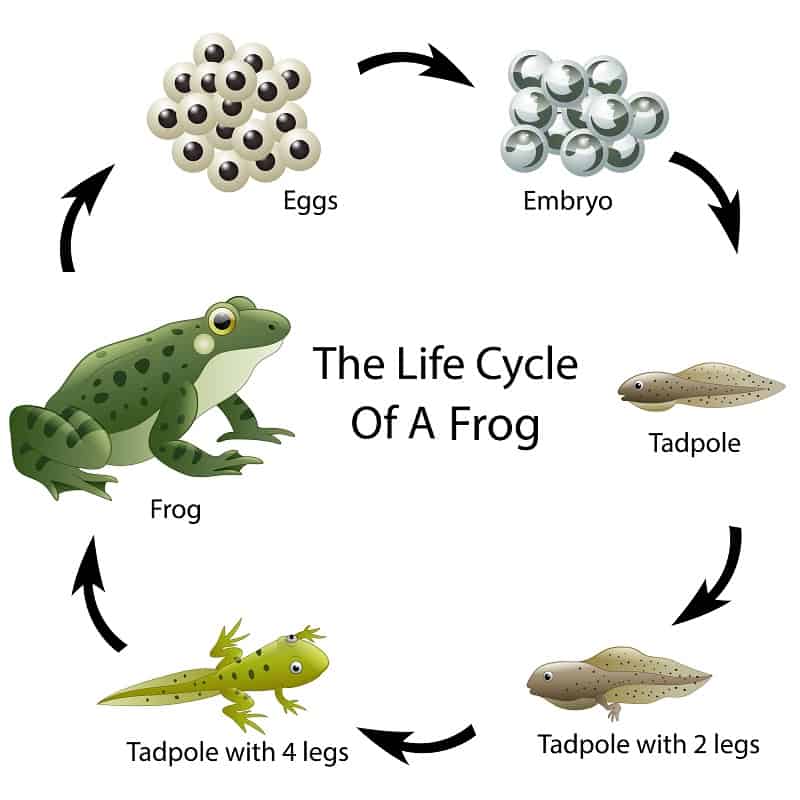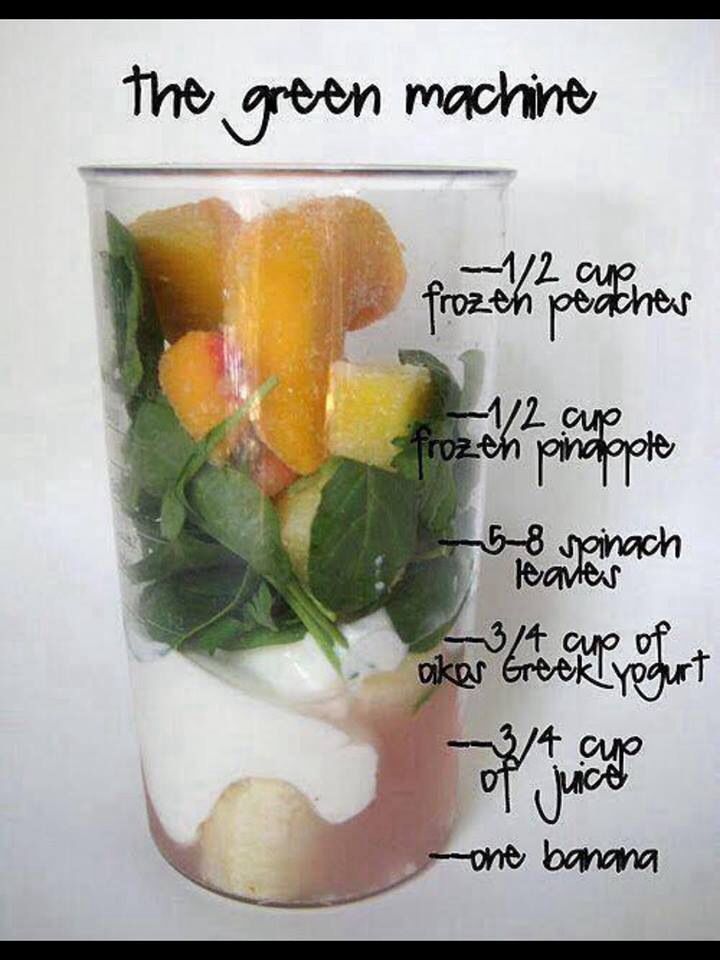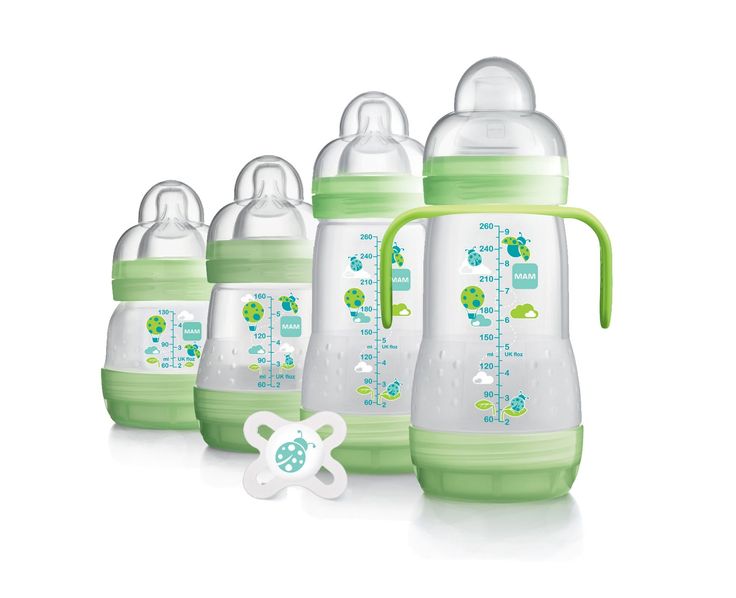Invention of baby food
The Food Timeline--baby food history notes
The Food Timeline--baby food history notes FoodTimeline libraryPeoples of all times and places have been feeding their babies. With the exception of mother's (or wet nurse's) milk, what was served and how it was made, was a function of culture, cuisine and economic status. Babies in Ancient Egypt thrived on different foods from those in Medieval England, Jomon Japan, 18th century Russia and early 20th century Kenya.
Up until the middle of the 19th century [in industrialized nations] infant food was generally made at home. Recipes and instructions for feeding babies were sometimes found in cookbooks. These foods were often grouped with invalid cookery. Why? They were generally thought to have similar properties. Both were highly nutritious and easily digested. Finely ground grains (oats, rice, barley) mixed with a liquid are found in most cultures. Example: Cookery for Children, Sarah Josepha Hale, 1852.
Food historians generally agree that manufactured baby food, as we know it today, was a byproduct of the European Industrial Revolution. The first mass-produced baby foods were invented by scientists/nutrition experts and manufactured in the mid-19th century by innovative companies. These were infant formulas, substitutes for mother's milk. At that time, tainted milk was often connected with infant mortality. Then, as now, there was much controversy regarding the use of artifical baby food. Ideas regarding amounts, timing, and what consitituted a healthy diet have likewise changed.
By the 1920s infant foods, which had grown to encompass ready-made baby cereals, fruits and vegetables, were promoted as convenience items. Food companies capitalized on "modern" notions of scientific feeding and the superiority of manufactured items over those homemade. Interestingly enough? American consumers did not immediately embrace these new foods. It took some very agressive marketing to win them over.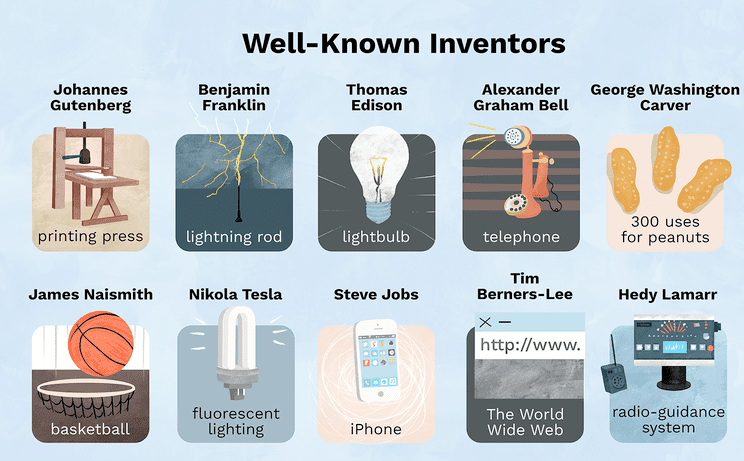
Some foods we regard today as sweets were originally marketed as health foods for children. Two cases in point: malted milk and chocolate pudding.
RECOMMENDED READING:
- "History of the Development of Infant Formulas," Infant Formula: Evluating the Safety of New Ingredients, Food and Nurition Board
- "Infant and Child Nutition," Cambridge World History of Food, Kiple & Ornelas, Volume Two, section VI.7 (p. 1444-1453)
---traces the history of infant feeding from prehistory to present; includes extensive bibliography for further study - Oxford Encyclopedia of Food and Drink in America, Andrew F. Smith, Volume 1 "Baby Food," (p. 57-59_ ---excellent overview; includes selected bibliography
- History of the feeding bottle, The Baby Bottle Museum, UK
A SHORT SURVEY OF MANUFACTURED BABY FOODS THROUGH TIME
[1867] LIEBIG'S SOLUBLE FOOD FOR BABIES/LONDON
"Perhaps not surprisingly, a major step in capitalization on the new advances in chemistry by marketing proprietary infant foods came from the scientist who laid the foundations of the New Newtrition, Baron Justus von Liebig. If indeed foods were constituted of protein, carbohydrates, and fats, could these nutrients not be combined into a replica of mother's milk? Thus, in 1867 the Baron introduced Liebig's Soluble Food for Babies in the European market. By the next year it was being manufactured and sold in London by the Liebig's Registered Concentrated Milk Company and within a year after that it had migrated to the United States. Liebig did not challenge the prevalent notion that mother's milk was the perfect infant food. Rather, he claimed that he had succeeded in concocting a substance, at first liquid, then powdered, whose chemical makeup was virtually identical to that of mother's milk. Liebig's Food was soon followed by a host of imitators. Some contained dried milk and called only for the addition of water. Others, like Liebig's original formula, were to be added to diluted milk. Soon some doctors were proclaiming these foods to be superior to the milk of wet nurses."
If indeed foods were constituted of protein, carbohydrates, and fats, could these nutrients not be combined into a replica of mother's milk? Thus, in 1867 the Baron introduced Liebig's Soluble Food for Babies in the European market. By the next year it was being manufactured and sold in London by the Liebig's Registered Concentrated Milk Company and within a year after that it had migrated to the United States. Liebig did not challenge the prevalent notion that mother's milk was the perfect infant food. Rather, he claimed that he had succeeded in concocting a substance, at first liquid, then powdered, whose chemical makeup was virtually identical to that of mother's milk. Liebig's Food was soon followed by a host of imitators. Some contained dried milk and called only for the addition of water. Others, like Liebig's original formula, were to be added to diluted milk. Soon some doctors were proclaiming these foods to be superior to the milk of wet nurses."
---Revolution at the Table: The Transformation of the American Diet, Harvey Levenstein [Oxford University Press:New York] 1988 (p. 122-3)
122-3)
About Justus von Liebig.
[1867] NESTLE'S MILK FOOD/SWITZERLAND (powdered)
"In 1867, the Swiss merchjant Henri Nestle invented the first artificial infant food, and in 1873, 500,000 boxes of Nestle's Milk Food were sold in the United States as well as in Europe, Argentina, and the Dutch East Indies. By the late 1880s, several brands of mass- produced foods, mostly grain mixtures to be mixed with milk or water, were on the market. These included Liebig's Food, Carnick's Soluble Food, Eskay's Albumenized Food, Imperial Granum, Wagner's Infant Food and Mellin's Food. Mellin's was perhaps the most widely used."
---Oxford Encyclopedia of Food and Drink in America, Andrew F. Smith editor [Oxford University Press:New York] 2004, volume 1 (p. 57)
"In 1867, Henri Nestle, a pharmacist, was asked by a friend to make something for an infant who could not digest fresh cow's milk...Nestle created a milk food form crubs made from baked malted wheat rusks mixed with sweetened condensed milk. This granular brown powder was the first instant weaning food. He dalled his alternaive to breast-feeding Farine Lactee Henri Nestle and adopted his family's coat of arms, a bird's nest, as a trademark...Nestle sold his company to Jules Monnerat in 1874."
This granular brown powder was the first instant weaning food. He dalled his alternaive to breast-feeding Farine Lactee Henri Nestle and adopted his family's coat of arms, a bird's nest, as a trademark...Nestle sold his company to Jules Monnerat in 1874."
---Oxford Encyclopedia of Food and Drink in America, Andrew F. Smith editor [Oxford University Press:New York] 2004, volume 2 (p. 180)
[1874] MELLIN'S FOOD/United Kingdom
"The exhibits of Mellin's food in the Mechanics and Instituted exhibitions now in progress have attracted the attention of thousands of visitors, and the people are beginning to examine and discuss the suggestive topic which the displays suggest. Time and experience have put this food to a successful test, and its important bearing upon the rising and future generations cannot be oversetimated. Its history proves again that it is almost invariably the case that a really good article is slow in making its way into the favor of the public, but, when finally its excellences are known, its success is assured and the rapidity of its introduction marvellous. This is notably the case with the article which is known as Mellin's food, and which is now being so generally received into public favor. For years it has been a deplorable but acknowldged fact, that an alarming percentage of children die before reaching the age of five years. In England, the number of children that die under one year old is in the ratio of one to every twelve births...Liebig's food,...came the nearest to a practical solution of the difficult problem, but it was unsuitable for distribution and exportation, and much trouble and a sacrifice of time were entailed by its daily preparation. G. Mellin of London, following Liebig's suggestions, produced an article which is portable, easy of preparation, and which gives entire satisfaction. Mellin's food, requires neither boiling nor straining, that having already been done, but is almost instantly prepared for use by dissolving a certain quantity in hot water and then adding cold milk. Analysis of the food after mixing shows it to contain a large proportion of grape sugar, which enters so largely into the composition of mother's milk, together with a large amount of protein and soluble phosphates, indicating flesh and bone forming nutrients of the highest type.
This is notably the case with the article which is known as Mellin's food, and which is now being so generally received into public favor. For years it has been a deplorable but acknowldged fact, that an alarming percentage of children die before reaching the age of five years. In England, the number of children that die under one year old is in the ratio of one to every twelve births...Liebig's food,...came the nearest to a practical solution of the difficult problem, but it was unsuitable for distribution and exportation, and much trouble and a sacrifice of time were entailed by its daily preparation. G. Mellin of London, following Liebig's suggestions, produced an article which is portable, easy of preparation, and which gives entire satisfaction. Mellin's food, requires neither boiling nor straining, that having already been done, but is almost instantly prepared for use by dissolving a certain quantity in hot water and then adding cold milk. Analysis of the food after mixing shows it to contain a large proportion of grape sugar, which enters so largely into the composition of mother's milk, together with a large amount of protein and soluble phosphates, indicating flesh and bone forming nutrients of the highest type. ..Thus sucenc e finally conquered all difficulties, and produced a food that all mothers will hail with delight. Not until 1874 did it make its appearance in this country, and then through the enterprises of Theodore Metcalf & Co., who, in response to the growing demand, obtained the North American agency. In order to supply the greatly increased demand in Europe and America for this food the proprietor was obliged to erect larger works, and since 1877 the food has been regularly supplied....The best medical men in the country now acknowledge its merits and prescribe it in cases where formerly they were almost helpless."
..Thus sucenc e finally conquered all difficulties, and produced a food that all mothers will hail with delight. Not until 1874 did it make its appearance in this country, and then through the enterprises of Theodore Metcalf & Co., who, in response to the growing demand, obtained the North American agency. In order to supply the greatly increased demand in Europe and America for this food the proprietor was obliged to erect larger works, and since 1877 the food has been regularly supplied....The best medical men in the country now acknowledge its merits and prescribe it in cases where formerly they were almost helpless."
---"A Public Benefactor: An Exhibit at the Fair--Mellin's Food for Infants...", Boston Daily Globe, November 6, 1881 (p. 5)
"The Duty of Every Mother and especially those who are charged with the delicate and great responsibility of rearing hand-fed children, is to investigate the merits of the best artificial food for the preservation of infant life.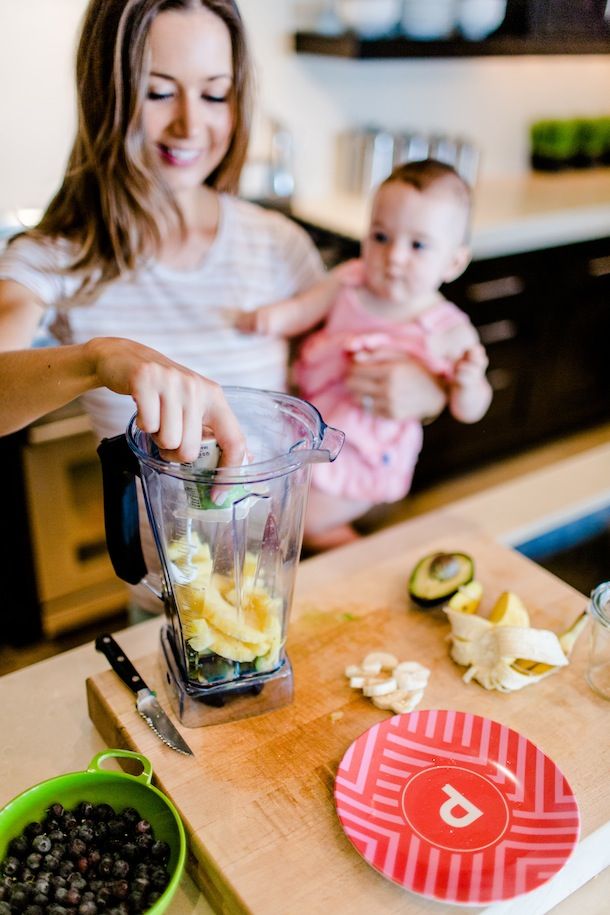 The universal testimony of our most skillful physicians, and of thousands of mothers who have practially tested it, demonstrated beyond a doubt that Mellin's Food for Infants is the best, and contains exactly the ingredients necessary to insure the life and health of the little ones to develop them in body and mind, and secure robust health in childhood, manhood and womanhood."
The universal testimony of our most skillful physicians, and of thousands of mothers who have practially tested it, demonstrated beyond a doubt that Mellin's Food for Infants is the best, and contains exactly the ingredients necessary to insure the life and health of the little ones to develop them in body and mind, and secure robust health in childhood, manhood and womanhood."
---display ad, Theodore Metcalf & Co., 39 Tremont St., Boston Mass., "Sole agents for the United States and British America," Boston Daily Globe, April 11, 1880 (p. 30) [NOTE: this ad contains physican testimonials.]
"By the 1890s the most popular by far of the powders to be added to milk was Mellin's Food, developed in England and manufactured in Boston, whose advertisements claimed that it was "the genuine Liebig's Food," The best known of the dried-milk products was another European import, Nestle's Milk Food, which was manufactured and distributed under license by a New York City firm. Advertisements for various proprietary infant foods because well-nigh ubiquitious by the 1890s....Nestle's ("Best for Babies") said it was better for babies than milk, for "impure milk in hot weather is one of the chief causes of sickness among babies."...A favorite promotional technique was to offer free samples by mail to the readers of middle-class magazines. Perhaps the most effective with middle-class mothers...were the free handbooks on infant care feeding distributed by the companies. Mellin's with its own press, was especially active in this field. The handbooks explained the chemistry of milk and feeding in clear but relatively sophisticated language, adding an aura of science to the food they were promoting. Not only did they prove effective in convincing mothers of the efficacy of proprietary infant foods, they convinced many doctors as well...Thus, by the 1980s a number of sources spread the growing impression that artificial feeding was both scientific and modern."
Advertisements for various proprietary infant foods because well-nigh ubiquitious by the 1890s....Nestle's ("Best for Babies") said it was better for babies than milk, for "impure milk in hot weather is one of the chief causes of sickness among babies."...A favorite promotional technique was to offer free samples by mail to the readers of middle-class magazines. Perhaps the most effective with middle-class mothers...were the free handbooks on infant care feeding distributed by the companies. Mellin's with its own press, was especially active in this field. The handbooks explained the chemistry of milk and feeding in clear but relatively sophisticated language, adding an aura of science to the food they were promoting. Not only did they prove effective in convincing mothers of the efficacy of proprietary infant foods, they convinced many doctors as well...Thus, by the 1980s a number of sources spread the growing impression that artificial feeding was both scientific and modern."
---Revolution at the Table: The Transformation of the American Diet, Harvey Levenstein [Oxford University Press:New York] 1988 (p.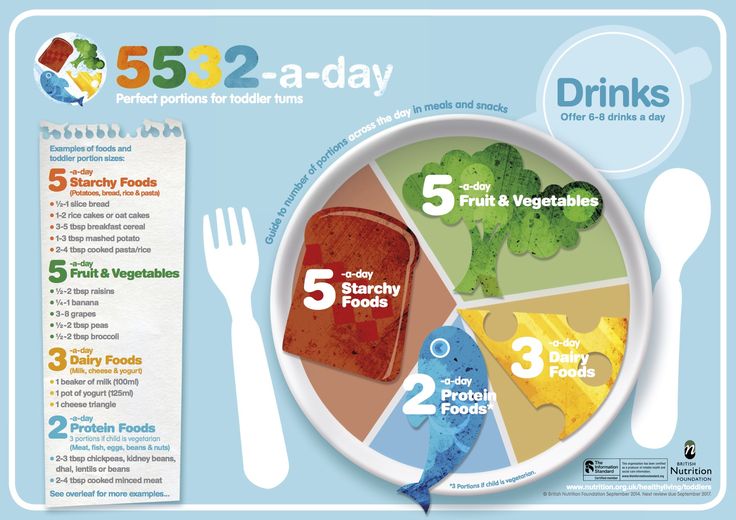 124)
124)
[NOTE: This book contains much more information on this topic. If you need more details ask your librarian can help you obtain a copy.
How much did these powdered formulas cost? Advertisement published in the New York Times, Marh 30, 1884 (p. 3) states: Nestle's Milk Food, 70 cents--$1.00; mellin's Food, 30 cents-50 cents. Horlick's Food, 65 cents-$1.00.
Our survey of historic American newspapers reveals the Boston-based firm Dolibar, Goodale & Co. [41 Central Warf] was a distribtor for Mellin's in 1884. Articles and advertisements confirm Doliber continued to distribute Mellin's food at least until 1906.
[1893] AMERICAN DIETARY RECOMMENDATIONS
"Farinaceous Foods. There are many farinaceious forms of food prepared fo r the use of infants and children. Probably the most valuable of them are those made according to the Leibig process. The starch of the grain from wich such foods are prepared is, int he process of manufacture, changed into soluble detrine, or sugar (glucose), by the action of the diastase of malt: the very thing which an infant cannot do. When we consider that the digestion of starch in the alimentary canal consists of this change into glucose, and that it is effected principally by the saliva and the pancreatic juice, the significance of the value of such foods will be seen...Mellin's food and malted mlk are prepared according to the Liebig process. in them the starch has been converted into soluble matter by teh action of the ferment of maltk. It is really a partial predigestion. Mellon's food does not contain milk...Mellin's food bears comparison with nilk. It is easily digested, and as an attenuant for milk may be used without harm during the early months of life, but it should not be used to the exclusion of milk for more than a few days at a time, and then only when milk is not retained by the stomach. Later it is doubtless a valuable addition to the regular daily food of the child. Malted milk is made form selected grain and desiccated or dried milk. To prepare it for the infant it needs only the addition of water.
When we consider that the digestion of starch in the alimentary canal consists of this change into glucose, and that it is effected principally by the saliva and the pancreatic juice, the significance of the value of such foods will be seen...Mellin's food and malted mlk are prepared according to the Liebig process. in them the starch has been converted into soluble matter by teh action of the ferment of maltk. It is really a partial predigestion. Mellon's food does not contain milk...Mellin's food bears comparison with nilk. It is easily digested, and as an attenuant for milk may be used without harm during the early months of life, but it should not be used to the exclusion of milk for more than a few days at a time, and then only when milk is not retained by the stomach. Later it is doubtless a valuable addition to the regular daily food of the child. Malted milk is made form selected grain and desiccated or dried milk. To prepare it for the infant it needs only the addition of water.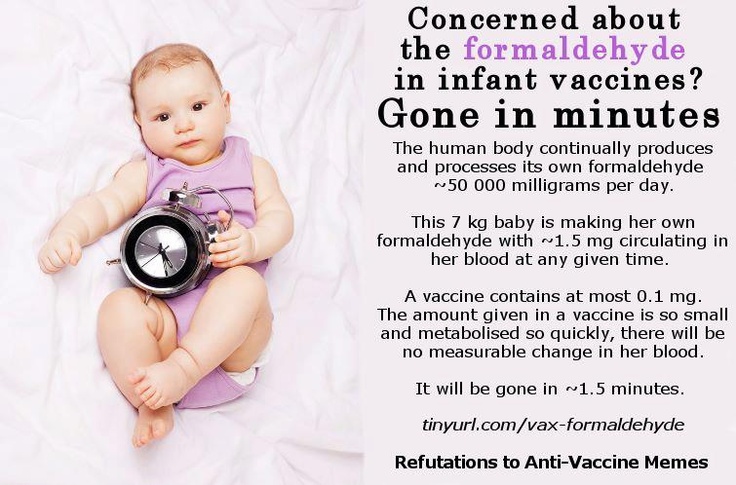 It is probably one of the best substitutes for milk but should not be used for any length of time when it is possible to get good milk....Nestle's food, Imperial Granum, Ridge's food, and some others are made very carefully from selected wheat by this process. Nestle's food contains dried milk. These foods are all valuable when made into gruel or porridge, but should be used very sparingly under the age of twelve months, and then only as attenuants ofr milk, not as substitutes for it. Dr. Mary Putnam Jacobi, editor of 'Domestic Hygiene of the Child,' by Uffelmann (a translation), in speaking of the value of the various preparations of infants' food on the market says: 'There is not the slightest reason to prefer them to milk or its preparations, except that the latter requires more care; and for any intelligent and affectionate mother this reason is quite insufficient."
It is probably one of the best substitutes for milk but should not be used for any length of time when it is possible to get good milk....Nestle's food, Imperial Granum, Ridge's food, and some others are made very carefully from selected wheat by this process. Nestle's food contains dried milk. These foods are all valuable when made into gruel or porridge, but should be used very sparingly under the age of twelve months, and then only as attenuants ofr milk, not as substitutes for it. Dr. Mary Putnam Jacobi, editor of 'Domestic Hygiene of the Child,' by Uffelmann (a translation), in speaking of the value of the various preparations of infants' food on the market says: 'There is not the slightest reason to prefer them to milk or its preparations, except that the latter requires more care; and for any intelligent and affectionate mother this reason is quite insufficient."
---A Handbook of Invalid Cooking, Mary A. Boland [Century Co.:New York] 1893, 1898(p. 289-292)
[1924] SPECIAL INFANT FOODS
"Of the many patent infant and invalid foods on the market, some consist of cow's milk combined with varying amounts of carbohydrates of other materials and others seem to be made of starchy materials without milk. In some cases the carbohydrates have apparently been malted before being combined with milk, or else malt extract is added during the process of manufacture. Experience had shown that these special foods, when they contain nutrietns of milk, are sometimes valuable for infants when it is necessary to resort to artificial feeding. Too much faith should not be put in the extravagant claims made for some brands of infant foods. The safest course is to follow the advice of a competent physician in selecting the substitute for natural feeding. It is often wiser to use cow's milk, modified at home under a physician's direction, rather than these commercial foods."
In some cases the carbohydrates have apparently been malted before being combined with milk, or else malt extract is added during the process of manufacture. Experience had shown that these special foods, when they contain nutrietns of milk, are sometimes valuable for infants when it is necessary to resort to artificial feeding. Too much faith should not be put in the extravagant claims made for some brands of infant foods. The safest course is to follow the advice of a competent physician in selecting the substitute for natural feeding. It is often wiser to use cow's milk, modified at home under a physician's direction, rather than these commercial foods."
---Milk and Its Uses in the Home, U.S. Department of Agriculture, Farmers' Bulletin No. 1359 [Government Printing Office:Washington DC] revised January 1924 (p. 15) [NOTE: This booklet also states "That the best food for an infant is milk from a strong, healthy woman is admitted by everyone. When it is not obtainable, the more nearly the substitute resembles it the better.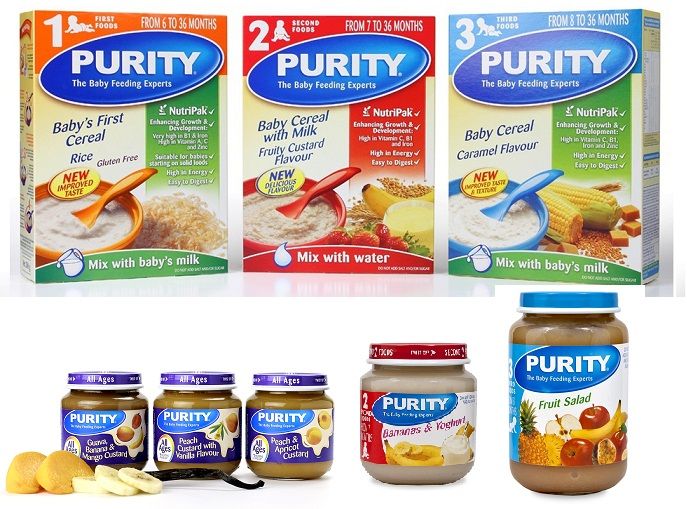 Cow's milk is the most common substitute, and when necessary may be artificially modified. Goat's milk, too, is in some cases recommened for infants." (P. 5)]
Cow's milk is the most common substitute, and when necessary may be artificially modified. Goat's milk, too, is in some cases recommened for infants." (P. 5)]
[1928] GERBER'S/United States
Gerber's launched its new baby food line in 1928 with a special promtion intended to get mothers to try the product and create a demand for the item in retail grocers stores: About Gerber's.
"1928: Danel Gerber improves baby foods with improved methods for straining peas and finds by a maket surey that a large market exists for such foods if they can be cold cheaply through grocery stores. Gerber advertises in Child's Life magazine and offers six cans for a dollar (less than half the pices of baby foods sold at pharmacies) to customers will send in coupons filled out with the names and addresses of their grocers."
---The Food Chronology, James Trager [Henry Holt:New York] 1995 (p. 455)
"By the late 1920s, commercially canned baby food was introduced and quickly adopted by American consumers. Conditions were favorable: advertising had become widespread, the cost of canned foods had fallen, and experts recommended the addition of fruits and vegetables to the infant diet. The Gerber Company initiated this revolution in infant feeding by expanding the scope of the canned foods industry. According to the Gerber company history, in 1927 Dorothy Gerber laboriously hand-strained vegetables for her seven-month-old daughter, Sally, and urged her husband, Daniel, to consider manufacturing stained baby food a the Gerber family's Fremont Canning Company. The next year, the company introduced strained peas, prunes, carrots, and spinach to the market. The Gerbers launched an advertising campaign featuring a sketch of an infant known as the Gerber Baby that ran in such publications as Good Housekeeping, The Ladies' Home Journal, the Journal of the American Dietetics Association, and the Journal of the American Medical Association. The Gerber Baby icon, drawn by Dorothy Hope Smith, became the company's official trademark in 1931.
Conditions were favorable: advertising had become widespread, the cost of canned foods had fallen, and experts recommended the addition of fruits and vegetables to the infant diet. The Gerber Company initiated this revolution in infant feeding by expanding the scope of the canned foods industry. According to the Gerber company history, in 1927 Dorothy Gerber laboriously hand-strained vegetables for her seven-month-old daughter, Sally, and urged her husband, Daniel, to consider manufacturing stained baby food a the Gerber family's Fremont Canning Company. The next year, the company introduced strained peas, prunes, carrots, and spinach to the market. The Gerbers launched an advertising campaign featuring a sketch of an infant known as the Gerber Baby that ran in such publications as Good Housekeeping, The Ladies' Home Journal, the Journal of the American Dietetics Association, and the Journal of the American Medical Association. The Gerber Baby icon, drawn by Dorothy Hope Smith, became the company's official trademark in 1931. "
"
---Oxford Encyclopedia of Food and Drink in America, Andrew F. Smith editor [Oxford University Press:New York] 2004, Volume 1 (p. 58-9)
Who was the original Gerber Baby?
Ann Turner Cook, the neighbor of Boston artist Dorothy Hope Smith. Ms. Cook grew up to be a teacher.
"The Gerber babythe face that launched a brand The tousled hair, the bright eyes, the round, pursed lips. The Gerber baby is recognized all around the world. So who is this special baby? People polled throughout the United States surmised that the Gerber Baby had to have grown up to become someone famous: Guesses ranged from movie stars Humphrey Bogart and Elizabeth Taylor to Senator Bob Dole. But mystery novelist and retired English teacher Ann Turner Cook knows the real answer. Because she is the Gerber Baby. The back-story on the Gerber Baby In 1928 Gerber was looking for a face to represent a baby food ad campaign. The baby Ann Turner Cook posed for artist Dorothy Hope Smith. Her simple charcoal sketch competed with lots of portraits, including elaborate oil paintings. (Smith offered to finish the sketch if it were accepted.) Whether it was the simplicity of the drawing or the cuteness of the baby (or both!), the judges fell in love with the adorable cherub face of Ann Turner Cook. They were so taken with it that Smith didnt have to finish the sketch. Gerber used it just as it was. The illustration became so popular that Gerber adopted it as its official trademark in 1931. Since then the Gerber Baby has appeared on all GERBER packaging and in every Gerber advertisement, making Ann Turner Cook the worlds best-known baby image. Her sparkling eyes and inquisitive look personify Gerbers commitment to happy and healthy babies all over the world."
(Smith offered to finish the sketch if it were accepted.) Whether it was the simplicity of the drawing or the cuteness of the baby (or both!), the judges fell in love with the adorable cherub face of Ann Turner Cook. They were so taken with it that Smith didnt have to finish the sketch. Gerber used it just as it was. The illustration became so popular that Gerber adopted it as its official trademark in 1931. Since then the Gerber Baby has appeared on all GERBER packaging and in every Gerber advertisement, making Ann Turner Cook the worlds best-known baby image. Her sparkling eyes and inquisitive look personify Gerbers commitment to happy and healthy babies all over the world."
Gerber's Heritage
"The most enduring urban legend about the famous Gerber Baby has to be the one about Humphrey Bogart. It's been said that the image on the labels actually was a diaper- clad Bogie, sketched lovingly by his artist mom. Trouble is, the tough-guy actor was already a grown man when the first Gerber jars appeared on store shelves in 1928. Ann Turner Cook -- the real, honest-to-goodness Gerber Baby -- has heard all the face tales. Her cherubic face as a happy infant is forever etched in time on every label of every Gerber product sold in 80 countries, one of the most famous and enduring trademarks in history. These days, Cook is an energetic 77-year-old fledgling novelist who's not above using her notoriety as America's most famous baby to drum up interest in her murder mysteries, featuring an erstwhile female reporter sniffing out intrigue in small Florida towns....The daughter of well-known comic strip artist Leslie Turner, Cook taught literature and writing in Tampa schools for 26 years and raised four children. Since retiring in 1989, she has published two novels regionally, with a third in the works. But Cook will no doubt always be best known for her picture on the Gerber labels. Cook was about 4 months old in 1927 when family friend Dorothy Hope Smith sketched the image in charcoal. Using a neighbor's baby as a model wasn't so unusual in the artist enclave of Westport, Conn.
Ann Turner Cook -- the real, honest-to-goodness Gerber Baby -- has heard all the face tales. Her cherubic face as a happy infant is forever etched in time on every label of every Gerber product sold in 80 countries, one of the most famous and enduring trademarks in history. These days, Cook is an energetic 77-year-old fledgling novelist who's not above using her notoriety as America's most famous baby to drum up interest in her murder mysteries, featuring an erstwhile female reporter sniffing out intrigue in small Florida towns....The daughter of well-known comic strip artist Leslie Turner, Cook taught literature and writing in Tampa schools for 26 years and raised four children. Since retiring in 1989, she has published two novels regionally, with a third in the works. But Cook will no doubt always be best known for her picture on the Gerber labels. Cook was about 4 months old in 1927 when family friend Dorothy Hope Smith sketched the image in charcoal. Using a neighbor's baby as a model wasn't so unusual in the artist enclave of Westport, Conn. , and nobody thought much about it. Least of all Cook's dad, who for 27 years wrote and drew "Wash Tubbs and Captain Easy," a daily comic strip that ran in 500 newspapers. The next year, Gerber put out the call for images that could be used in ads for its new baby food products, and Smith submitted the drawing. "She wrote me [later] that she had thought it was kind of unfinished, and if they liked it she could finish it properly," Cook said of the sketch. "But they were smart enough that they didn't want anything done to it." Her likeness started appearing on the products in 1928 and became the official trademark in 1931."
, and nobody thought much about it. Least of all Cook's dad, who for 27 years wrote and drew "Wash Tubbs and Captain Easy," a daily comic strip that ran in 500 newspapers. The next year, Gerber put out the call for images that could be used in ads for its new baby food products, and Smith submitted the drawing. "She wrote me [later] that she had thought it was kind of unfinished, and if they liked it she could finish it properly," Cook said of the sketch. "But they were smart enough that they didn't want anything done to it." Her likeness started appearing on the products in 1928 and became the official trademark in 1931."
---"The Baby of Gerber's Family; for 75 Years, Ann Turner Cook Has Enjoyed Her Sketch of Fame," Mitch Stacy, Washington Post, February 29, 2004 (p. D1)
Recommended reading
- Encyclopedia of Consumer Brands, Volume 1: Consumable Products/Janice Jorgensen, editor
- Advertising Age Encyclopedia of Advertising, John McDonough, editor
[1931] PABLUM/CANADA
[1960s, USA]
"Fixing formula for your infant will soon be quicker and easier than pouring a glass of milk for your preschooler.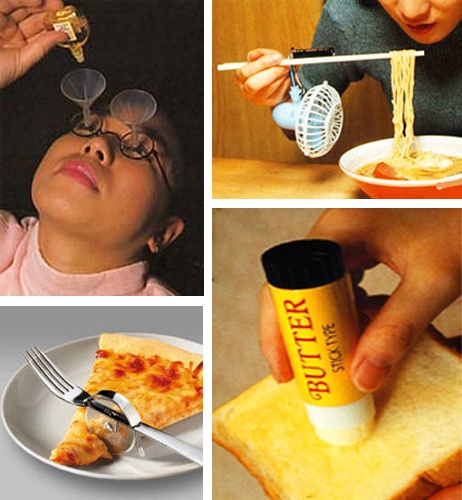 ..If your pediatrician approves, you will be able to buy ready-to-serve formula at your grocery or drug store in disposible glass bottles, marked with ounces. The formula is already sterilized, will keep unopened without refrigeration and need not be warmed before feeding. All you have to do is replace the bottle's cap with a sterilized-sized collar. The ready-bottled formula...is due for national distribution within a few months...A carton of four four-ounce bottles is priced at 75 cents; of size ounce bottles, 87 cents; of eight ounce size, 99 cents...The same ready-to-serve formula has been available in cans since 1962, but most be poured into sterilized bottles before feeding. Coming on the market soon is kit which makes it possible to attach a nipple to the metal can for quick feedings. A new manufacturing process had to be developed, however, before the formula could be preserved in the glass bottles without refrigeration. The last dozen years have seen major changes in the way infants in the United States are fed.
..If your pediatrician approves, you will be able to buy ready-to-serve formula at your grocery or drug store in disposible glass bottles, marked with ounces. The formula is already sterilized, will keep unopened without refrigeration and need not be warmed before feeding. All you have to do is replace the bottle's cap with a sterilized-sized collar. The ready-bottled formula...is due for national distribution within a few months...A carton of four four-ounce bottles is priced at 75 cents; of size ounce bottles, 87 cents; of eight ounce size, 99 cents...The same ready-to-serve formula has been available in cans since 1962, but most be poured into sterilized bottles before feeding. Coming on the market soon is kit which makes it possible to attach a nipple to the metal can for quick feedings. A new manufacturing process had to be developed, however, before the formula could be preserved in the glass bottles without refrigeration. The last dozen years have seen major changes in the way infants in the United States are fed. Only one mother in five now fixes the baby formul using the traditional evaporated milk mixed with carbohydrate modifiers, a mainstay of two-thirds of babies in 1952. Half of today's mothers now use a prepared infant formula, either a powder or liquid which is mixed with water, or the ready-serve formula poured from a can into sterilized bottles. The percentage has doubled in the last five years, was only 15 per cent in 1952. One baby in five, usually those past three or four months of age, gets whole cow's milk. Only one in 10 is breast fed, still the safest, most convenient and least expensive method of nourishing an infant. But even some breast-fed infants are ocasionally given formula as a supplement, or when the mother must be away from home at feeding time."
Only one mother in five now fixes the baby formul using the traditional evaporated milk mixed with carbohydrate modifiers, a mainstay of two-thirds of babies in 1952. Half of today's mothers now use a prepared infant formula, either a powder or liquid which is mixed with water, or the ready-serve formula poured from a can into sterilized bottles. The percentage has doubled in the last five years, was only 15 per cent in 1952. One baby in five, usually those past three or four months of age, gets whole cow's milk. Only one in 10 is breast fed, still the safest, most convenient and least expensive method of nourishing an infant. But even some breast-fed infants are ocasionally given formula as a supplement, or when the mother must be away from home at feeding time."
---"Feeding a Baby is Easier, But There Are Still Problems," Joan Beck, Chicago Tribune, March 24, 1964 (p. A2)
Pablum brand baby food
The *problem* with pablum is this is both a proprietary tradename with a patented formula AND a generic word used by many to describe any fortified grain-based baby cereal. Some people (who are not fond of such products) use the term to indicate any bland, porridge-type food.
Some people (who are not fond of such products) use the term to indicate any bland, porridge-type food.
Who developed Pablum?
"During the 1920s and 1930s, considerable time and effort were spent studying the science of artificial feeding. The scientific management of child-rearing in general - from food to behaviour advice - increased the professional role and authority of physicians in child care issues. Society seemed to welcome the scientific approach to infant feeding and food and bought products that advertised increased nutritional value for their children. In 1931, Pablum, an infant cereal containing necessary minerals and vitamins for children's health, became available in Canada and the United States. The food was heralded as an excellent cereal addition to the infant's diet and remains a popular infant food today. It was three Canadian doctors - Frederick Tisdall (1893-1949), Theodore Drake (1891-1959), and Alan Brown (1887-1960) - who developed Pablum at the Hospital for Sick Children in Toronto. "
"
Source: here
USA Patent & manufacturing
Mead Johnson secured US trademark rights in 1932 and patent protection in 1935:
"Harry H. Engel, a developer of Pablum baby cereal, has died at the age of 82. Mr. Engel, one of three patent holders on Pablum, died Friday at Deaconess Hospital in Evansville. Mr. Engle worked 47 years for Mead Johnson & Company before retiring in 1967. Fourteen years after joining the company as a chemist, Mr. Engle helped develop Pablum, a soft, bland cereal for infants."
---"Harry H. Engel," New York Times, April 2, 1984 (p. D13)
[NOTE: Mr. Engel's patent is number 1,990,329, published February 5, 1935. The other people named in this patent are Lambert D. Johnson and Nathan F. True.]
Trademarks
According to the records of the US Patent & Trademark Organization, Pablum brand baby food was introduced to the American public by Mead Johnson June 4, 1932:
"Word Mark PABLUM Goods and Services (EXPIRED) IC 030.![]() US 046. G & S: SPECIALLY PREPARED CEREAL FOOD CONSISTING OF A MIXTURE OF WHEAT MEAL, OATMEAL, AND YELLOW CORN MEAL, TO WHICH HAVE BEEN ADDED WHEAT EMBRYO, DRIED YEAST, POWDERED DEHYDRATED ALFALFA LEAF, AND POWDERED BEEF BONE PREPARED FOR HUMAN USE. FIRST USE: 19320604. FIRST USE IN COMMERCE: 19320604 Mark Drawing Code (1) TYPED DRAWING Serial Number 71327942 Filing Date June 13, 1932 Current Filing Basis 1A Original Filing Basis 1A Registration Number 0297897 Registration Date October 4, 1932 Owner (REGISTRANT) MEAD JOHNSON & COMPANY CORPORATION INDIANA OHIO STREET AND SAINT JOSEPH AVENUE EVANSVILLE INDIANA Assignment Recorded ASSIGNMENT RECORDED Type of Mark TRADEMARK Register PRINCIPAL Renewal 2ND RENEWAL 19721004 Live/Dead Indicator DEAD"
US 046. G & S: SPECIALLY PREPARED CEREAL FOOD CONSISTING OF A MIXTURE OF WHEAT MEAL, OATMEAL, AND YELLOW CORN MEAL, TO WHICH HAVE BEEN ADDED WHEAT EMBRYO, DRIED YEAST, POWDERED DEHYDRATED ALFALFA LEAF, AND POWDERED BEEF BONE PREPARED FOR HUMAN USE. FIRST USE: 19320604. FIRST USE IN COMMERCE: 19320604 Mark Drawing Code (1) TYPED DRAWING Serial Number 71327942 Filing Date June 13, 1932 Current Filing Basis 1A Original Filing Basis 1A Registration Number 0297897 Registration Date October 4, 1932 Owner (REGISTRANT) MEAD JOHNSON & COMPANY CORPORATION INDIANA OHIO STREET AND SAINT JOSEPH AVENUE EVANSVILLE INDIANA Assignment Recorded ASSIGNMENT RECORDED Type of Mark TRADEMARK Register PRINCIPAL Renewal 2ND RENEWAL 19721004 Live/Dead Indicator DEAD"
The US Patent & Trademark Office confirms Pablum brand baby foods were abandoned by Mead Johnson March 18, 1997. This indicates the company is no longer manufacturing a product with this name. The only "live" mark for Pablum in this database his held by private individual.
"Word Mark PABLUM Goods and Services (ABANDONED) IC 005. US 018 046. G & S: precooked, dried cereals specially prepared for infants and children Mark Drawing Code (3) DESIGN PLUS WORDS, LETTERS, AND/OR NUMBERS Design Search Code 26.03.21 - Ovals that are completely or partially shaded Serial Number 74579245 Filing Date September 23, 1994 Current Filing Basis 1B Original Filing Basis 1B Published for Opposition June 25, 1996 Owner (APPLICANT) MEAD JOHNSON & COMPANY CORPORATION DELAWARE 2400 West Lloyd Expressway Evansville INDIANA 477210001 Assignment Recorded ASSIGNMENT RECORDED Attorney of Record Clark W. Lackert Description of Mark The drawing is lined for the color red. Type of Mark TRADEMARK Register PRINCIPAL Live/Dead Indicator DEAD Abandonment Date March 18, 1997
How was this product initially received?
"Competition from cheaper infoant food products has been growing, but the quality of Mead-Johnson's products and the goodwill of the medical profession which has been painstakingly developed and retained, places the company in a position from which it cannot easily be dislodged. Some new items, notably 'Pablum' cereal, recently added to the well-known line of specialty food products, have been well received."
Some new items, notably 'Pablum' cereal, recently added to the well-known line of specialty food products, have been well received."
---"Inquiring Investor," Wall Street Journal, April 12, 1934 (p. 8)
FoodTimeline library owns 2300+ books, hundreds of 20th century USA food company brochures, & dozens of vintage magazines (Good Housekeeping, American Cookery, Ladies Home Journal &c.) We also have ready access to historic magazine, newspaper & academic databases. Service is free and welcomes everyone. Have questions? Ask!
About culinary research & about copyright
Research conducted by Lynne Olver, editor The Food Timeline. About this site.
http://www.foodtimeline.org/foodbaby.html
© Lynne Olver 2004
3 January 2015
The history of commercial baby food in the US
Photo: Thomas Hawk / Flickr
Popular since its invention in the early 20th century, commercial baby food was seen as a product of convenience for women. "They were advertised as safe, modern and better than you could prepare at home," says Amy Bentley, author of Inventing Baby Food and associate professor in the Department of Nutrition, Food Studies and Public Health at New York University.
"They were advertised as safe, modern and better than you could prepare at home," says Amy Bentley, author of Inventing Baby Food and associate professor in the Department of Nutrition, Food Studies and Public Health at New York University.
Noelle Carter: What did we do before commercial baby food? How did babies eat, and when did mothers introduce their babies to solid food?
Amy BentleyAmy Bentley: Commercial baby food started in the early 20th century, in the late 1920s. Before then, there wasn't a category specifically called "baby food." There was a category of soft foods -- foods that were appropriate for infants, invalids and the elderly.
But the advice and practice of the late 19th century was really that you didn't feed babies solid food until about 1 year of age. You were supposed to breastfeed them -- or use formulas, if you absolutely had to. It was thought that solid food wasn't needed until later.
In fact, there was advice in practice that you did not feed children fruits and vegetables until about 2 years of age.
NC: How did commercial baby food come to be?
AB: As vitamins were discovered in the 19-teens, that was also about the time you had the industrialization of the food supply. Those products were more widely available and more affordable.
There was a man named Harold Clapp in Rochester, New York, whose child was sick. He created a soup for his child made of vegetables. It proved so popular that his friends asked him for it. He went to the local cannery and commercially prepared this product.
That was also about the same time that the Gerber Products Company was starting to produce baby food. Others just picked it up, and eventually you had the development of three or four really big commercial brands. But it was very, very popular from the get-go.
The products were portable and convenient.
They were advertised as safe, modern and better than you could prepare at home. They were seen as a product of convenience for women. Women could put them in their bags, remove themselves from the kitchen and travel around. It eventually made it easier for them to go outside and perform paid labor because they had this portable baby food.
NC: Baby food was incredibly popular until the 1970s. Then, all of a sudden, the use of baby food and a number of other things came into question. What happened?
AB: Through the mid-20th century, the average age of when it was understood you could feed a baby solids begins to drop dramatically. Whereas, in the early 20th century, the average age of feeding an infant solids is around 9 to 12 months of age, by the 1950s and '60s, the average age of introducing solids to a baby is 4 to 6 weeks of age. There are some doctors who are promoting introducing solids at 24 hours after birth.

"Once infants go off baby food, one of the top three vegetables they consume is french fries."
-Amy BentleyThis was because baby food was thought to be strong and healthy. Solid food was better than liquid formula. Most parents formula-fed their babies in the mid-20th century, so commercial solid food was the next step. There was no scientific evidence that this was harmful for a child.
Then, in the Cold War period, there was this idea that we need our children strong and we need them to be competitive. "I might be doing my baby a disservice if I don't feed my child commercial baby food early."
This begins to change in the 1970s and '80s as you have a general ethos that's a little more mistrustful of science and institutions, and skeptical of technology. Women start to ascribe to an ethos called natural motherhood. "I should trust my instincts; I know better than anything how I should feed my baby."
There begins to be some scientific evidence that it probably is not the best thing to feed an infant solids so early.
This is, in part, because of the way that baby food is made during that period, which is with a lot of additives, sugar and salt. Also, an infant's digestive system is not equipped to digest solid food so early. The best food is breast milk.
Eventually they figure it out, so consumers push against the conventional baby food. They make their own baby food. The commercial manufacturers begin to take out sugar and salts, and begin to remove baby food desserts. Then you have a different era of what baby food should be, like: How I should feed my child and when I should feed my child baby food.
NC: You discussed the connection between commercial baby food and the industrialized palate. How might food choices -- baby food or even formula -- play a role in developing a child's sense of taste?
Inventing Baby FoodAB: Scientists are finding out that infants learn, grow and develop through taste, through their palates, even in utero.
We know that amniotic fluid is flavored by the food a woman eats. After birth, the foods that a child is exposed to have a big influence on how that child is learning, developing and understanding the world.
If children are only experiencing highly industrialized food products with milder profiles, more salt, more sugar and refined carbohydrates, then that's what their palates are becoming even more accustomed to. As humans, we're hard-wired to seek out sugar and eventually salt. But we need to learn to become acclimated to bitter flavors, sour flavors and a variety of profiles.
[Related story: It may take 10 tries to familiarize picky eaters with new foods]
There's more and more emphasis on first foods being something other than white rice cereal, for instance -- an avocado, meat or a red or an orange fruit or vegetable. There is no real scientific evidence that these can't be used as first foods. In fact, if we look around the world, we find that people feed their infants a wide variety of different kinds of first foods, including some very interesting spice combinations.

NC: Where do you see the trend in baby food going?
AB: In the last couple of decades, there's really been a rise of boutique baby foods that experiment with different flavors, grains and vegetables. Commercial baby foods are also expanding their repertoire.
There's also a group that understands there wasn't a category called baby food in the beginning, and maybe are arguing that there doesn't need to be a category called baby food. This is a trend called baby-led weaning. Those people advocate that infants be breastfed until about 6 months of age. Then you can just sit that child in a high chair, chop up table food, throw it on the high chair and the baby will be just fine.
That said, baby food is not going to go away because it is important for some children. Also, it is a product of convenience. In the U.S., we're very much attuned to convenience and mobility. These products allow women especially more flexibility with their lives.

Some studies show that baby food actually does provide a wider range of fruits and vegetables for infants than otherwise. You can buy a jar of mangos or a jar of beets. A lot of families don't have a very wide variety of fruits and vegetables. Once infants go off baby food, one of the top three vegetables they consume is french fries. Baby food can actually have a protective quality for a lot of American infants.
Each week, The Splendid Table brings you stories that expand your world view, inspire you to try something new and show how food brings us together. We rely on you to do this. And, when you donate, you'll become a member of The Splendid Table Co-op. It's a community of like-minded individuals who love good food, good conversation and kitchen companionship. Splendid Table Co-op members will get exclusive content each month and have special opportunities for connecting with The Splendid Table team.
Donate today for as little as $5.00 a month. Your gift only takes a few minutes and has a lasting impact on The Splendid Table and you'll be welcomed into The Splendid Table Co-op.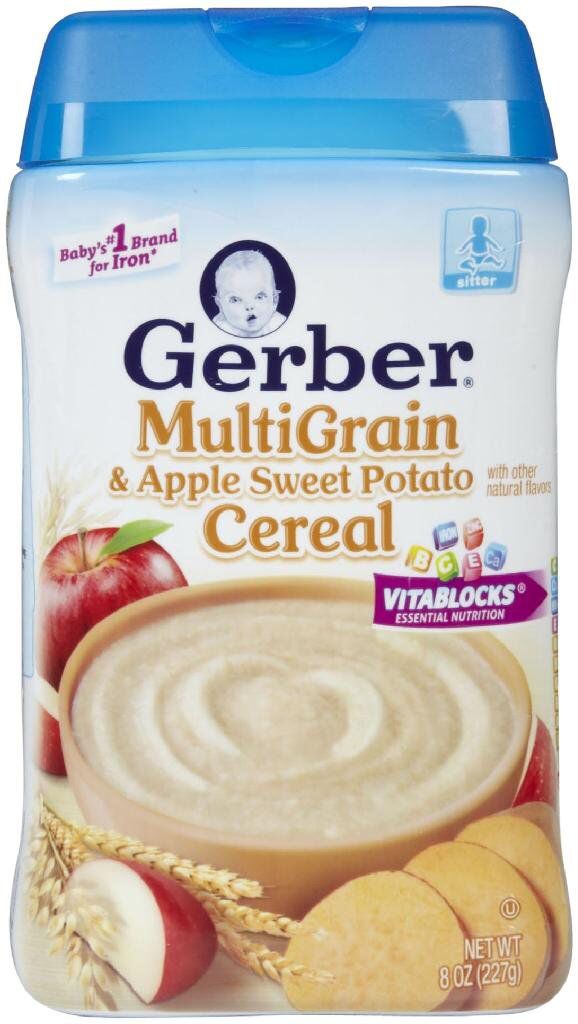
I've been thinking for quite some time about collecting all my thoughts on artificial baby food in one article, but I can't get to that work yet! There are several reasons why I put off writing this article, one of them is that this topic is incredibly broad! Actually, while I was writing this post, I realized that I want to break this topic into two parts.
The first part (namely this article) will tell about the history of the emergence and development of artificial formulas for baby food. The second part will compare the nutritional composition of infant formula and breast milk, and look more closely at the risks and benefits of formula-only feeding. nine0003
It is important to note at the outset of this story that it is not the intention of this material to portray infant formula in an unfavorable light.
Our generation is blessed to live in an age when children no longer die of malnutrition and malnutrition if their mother cannot breastfeed. As an emergency measure, artificial baby food is and always will be literally the only way to save children's lives, with no other options available . But feeding a baby exclusively with formula clearly has its serious drawbacks, and I really hope that by reading this article you will understand why formula feeding was NEVER intended for daily feeding of babies, except in dire emergencies. nine0003
As an emergency measure, artificial baby food is and always will be literally the only way to save children's lives, with no other options available . But feeding a baby exclusively with formula clearly has its serious drawbacks, and I really hope that by reading this article you will understand why formula feeding was NEVER intended for daily feeding of babies, except in dire emergencies. nine0003
Young children LIFELY need "living" food, which is human breast milk. Breast milk contains living cells, hormones, active enzymes, antibodies and at least 400 other unique components. This is a dynamic substance that provides the child with active immunity and protection against diseases every time he eats. And, compared to such miraculous breast milk, artificial milk sold as infant formula is little better than ordinary fast food. nine0008
Infant formula is the only commercially manufactured food in the world that is recommended for consumption within a few months of life. That being said, it is well known to all that no human being will remain healthy and physically prosperous on a diet of highly processed and artificial foods. In my next blog post, I'll outline the nutritional comparison between breast milk and formula, but for now, let's take a closer look at the history of infant formula. nine0003
That being said, it is well known to all that no human being will remain healthy and physically prosperous on a diet of highly processed and artificial foods. In my next blog post, I'll outline the nutritional comparison between breast milk and formula, but for now, let's take a closer look at the history of infant formula. nine0003
THE HISTORY OF CHILDREN'S NUTRITION
It has only been 60 years or so since the bottle feeding culture began to encourage mothers to give their babies highly processed foods from birth . Not only do women not face the choice of "breast or bottle," they don't even want to have that choice! But this is until recently, in historical terms.
Infant formula was never intended to be consumed on such a widespread basis as it is today. nine0003
Fig 1.
1800 and earlier - the time of wet nurses.
Throughout the history of mankind, if a woman was unable to produce milk for her child, or if the mother died, leaving an orphan to be fed, then the baby was found a nurse - a woman who fed someone else's child with her milk.
The practice of wet nurses was widespread before the introduction of bottle feeding and the introduction of artificial formula. The first mention of wet nurses is found as early as 2000 BC, and the practice of feeding children by wet nurses was widespread until the 20th century. nine0007 If a nurse could not be found, then the child was doomed to starvation or a constant lack of nutrients and vitamins, as he was fed with the milk of farm animals using a special baby bottle. The lack of human milk for a child born before the 1800s was literally a matter of life and death.
Rice 2. (Food for infants)
1845-1846 - Invention of the rubber teat and baby bottle. nine0008
Experience shows that baby bottles and nipples have been used by people since ancient times, they were made from improvised means, trying to create something similar to a mother's nipple. Vessels of various shapes and sizes have been found dating back thousands of years BC. Clay feeding bottles with protruding nipple spouts dating back to 2000 BC have been found in burial sites of newborn babies. These roughly crafted feeding bottles, and of course the problems with cleaning them, were described by observers throughout the Roman Empire, the Middle Ages, and the Renaissance. nine0003
Clay feeding bottles with protruding nipple spouts dating back to 2000 BC have been found in burial sites of newborn babies. These roughly crafted feeding bottles, and of course the problems with cleaning them, were described by observers throughout the Roman Empire, the Middle Ages, and the Renaissance. nine0003
But it wasn't until 1845 that Elia Pratt invented and patented the Indian rubber nipple, which became a truly functional and successful substitute for the female nipple. When it was discovered that orphaned babies could easily suck on these new rubber nipples, which plausibly mimicked a woman's breasts, the problem of getting food for orphaned babies was solved. And now attention quickly shifted to the problem of finding food itself, which no longer entailed so many child deaths. nine0003
As early as 1846, scientists and nutritionists identified medical problems regarding baby food, and infant mortality was already associated predominantly with bottle feeding. The development of the world's first special infant formula for feeding has begun.
The development of the world's first special infant formula for feeding has begun.
Rice 3. (Mom's Treasure)
Period 1867-1888 - the first infant formula was invented.
In 1867, Justus von Liebig invented the first commercially available infant formula. Liebig's Instant Baby Food was produced and marketed in London by Liebig's Registered Condensed Milk Company. Liebig himself did not accept the obvious fact that mother's milk is the ideal food for an infant, and claimed that he had succeeded in developing a substance whose chemical composition was "virtually identical to that of mother's milk." nine0003
The success of this product quickly stimulated the growth of competitors in the field, such as Mellin's Baby Food, Ridge's Baby Food and Nestlé Milk. By 1883, there were already 27 patented baby food brands on the market.
However, infant formula was still rightly regarded only as a supplementary food for infants who, if this type of nutrition were not available, would starve. These mixtures led to obesity in children, but at the same time they lacked valuable nutrients, such as proteins, vitamins and minerals. According to an article in The Boston Weekly, April 11, 1880, “It is the duty of every mother, and of those who have the great and delicate responsibility of feeding their children by means of artificial nourishment, to continually look for the best artificial nourishment.0007 to save infant life .”
These mixtures led to obesity in children, but at the same time they lacked valuable nutrients, such as proteins, vitamins and minerals. According to an article in The Boston Weekly, April 11, 1880, “It is the duty of every mother, and of those who have the great and delicate responsibility of feeding their children by means of artificial nourishment, to continually look for the best artificial nourishment.0007 to save infant life .”
Fig 4. ( Mixtures Nestle for happy children . Nestle babies have pink cheeks, sparkling eyes, as well as their brain, muscles and tendons develop so that in the future these babies grow into useful men for society and women
Nine out of ten problems with naughty and irritable babies can be directly linked to inappropriate food Let us provide you with a free half pound pack of Nestlé Food for your reference and our Mom's Book, which is full of useful tips on care for infants and young children Contact us today. )
)
The period from 1890 to 1907 - the emergence of homemade formulas for baby food.
While infant formula has had a significant impact on reducing infant mortality, medical luminaries have continued to spread the word to the public that formula is not a panacea for all childhood illnesses. Despite the advertising claims that formulas are "virtually identical to mother's milk", many infants still die from malnutrition, scurvy, rickets and bacterial infections. nine0008
And as physicians became increasingly concerned about the quality of commercially produced infant formula and found that infant formula was not light enough for infants to digest, various medical guidelines began to circulate, such as Dr. Thomas Morgan Rotch's "percentage method" (published in 1890). Such recommendations became widespread and popular by 1907. According to this formula, parents were advised to mix cow's milk, water, cream and sugar or honey in a certain ratio in order to obtain a nutritional composition close to human milk. nine0003
nine0003
These homemade formulas were less expensive and people deeply believed that they were healthier.
However, the children who received these foods also continued to suffer from diet-related illnesses - scurvy, rickets and bacterial infections - that they could not endure.
Fig 5 better than White House infant formula.
Doctors know that White House infant formula contains the nutrients of fresh milk and pure crystalline vitamin D3 - an important "sunshine" vitamin - which has been generously added to the formula for the proper development of the child's bones and teeth. What's more, White House formulas are carefully homogenized for easier digestion by babies and are sterilized in safe, airtight containers. These manufacturing features are approved by the American Medical Association Food and Nutrition Board. nine0003
Indeed, there is no better powdered milk for feeding children than White House. And no nutritionist can recommend the best powdered milk for cooking, baking, coffee and other drinks, or much more. )
)
Period 1908 to 1950 - Powdered milk based infant formulas took over America in a wave.
In the 1910s, powdered milk formula became widely available at low prices. Inspired by the success, dairy corporations began funding clinical trials that proved that formula-fed babies thrive “as if they were fed real breast milk.” nine0007 This argument for mixtures is not supported by modern research, but at that time they made a lot of money, based on deception.
Figure 6. (“My doctor recommends Carnation!”)
families. And as more women embraced the fad and relied on the bottle to feed their children, the more “instant baby food” seemed magical to the public. nine0007 By the late 1930s, the use of powdered milk formula in the United States outpaced all other commercially available infant formula, and by 1950, half of the children in the United States were being raised on powdered formula.
Figure 7.
1951 - 1970 - Feeding formula manufacturers begin to use aggressive advertising campaigns to boost sales.
In the late 1950s, Alfred Bosworth published the word "similac" reformulated and shortened from "similartolactation" ("like breastfeeding"), and Meade Johnson published the word "Enfamil" (from the combined "infant" and "meal" , i.e. "children's food"). Several other formulas were released over the next decade and, thanks to extremely aggressive advertising campaigns with exaggerated health benefits and slogans about the ideal nutritional composition, powdered infant formula began to seriously compete with formulas based on milk powder. nine0007 Infant formula became widely popular when breastfeeding began to be seen in society as "unkempt" and "dirty".
In 1959, advertising campaigns in hospitals and pediatric departments of hospitals proliferated with inexpensive trial formulas and by the early 1960s in the United States commercial formulas were already used more widely than formulas based on milk powder, which eventually disappeared altogether. off the market in the 1970s.
off the market in the 1970s.
Figure 8. (When the milk is at the expense of the state - it must be the best)
1971-1996 - child mortality and morbidity associated with the use of formula for feeding attract public attention.
By the early 1970s, more than 75% of American children were fed formula, almost all of which was commercially produced.
As birth rates declined in industrialized countries by the 1970s, infant formula manufacturers turned their advertising campaigns to non-industrialized countries. Unfortunately, poor sanitary conditions in such countries have led to a sharp increase in the death rate among infants fed with formula prepared with contaminated water. In addition, Third World women using formula to feed their babies lost their breast milk because they didn’t need it, and when formula ran out, they diluted it with three times the recommended amount of water in order to stretch the available quantity over a long period of time. This has led to mass child deaths from malnutrition. nine0003
This has led to mass child deaths from malnutrition. nine0003
UNICEF estimates that formula-fed children living in disease-ridden and unhygienic conditions are 25 times more likely to die from diarrhea and 4 times more likely to die from pneumonia than children in the same conditions but breastfed.
After it became known that 1.2 million infant deaths in third world countries were clearly the fault of formula feeding, there was a wave of protests around the world - the most famous was the boycott announced by Nestlé in 1977, calling for an end to unethical advertising campaigns for infant formula.
Unethical marketing of infant formula, the latest extreme of which is touting formula as a "healthy" baby food choice, eventually led to the formation of the International Code of Marketing of Breast-milk Substitutes. This is the international health policy framework for the promotion of breastfeeding, approved by the WHO World Health Assembly at 1981 year. This Code was developed as a global public health strategy and recommends limiting the marketing of infant formula to encourage women to breastfeed their babies and using breast milk substitutes judiciously and only when absolutely necessary.
This Code was developed as a global public health strategy and recommends limiting the marketing of infant formula to encourage women to breastfeed their babies and using breast milk substitutes judiciously and only when absolutely necessary.
Figure 9. (Profits are rising...and infant mortality too. Nestlé boycott)
1997 and present - breast or bottle. nine0008
Despite the best efforts of all public awareness campaigns, fast food culture in America is still widespread and involves the use of infant formula in infant nutrition.
In addition to the widespread commercial brands, generic (or proprietary) brands of infant formula appeared in the United States in 1997, the first being PBMProducts. These private label blends are sold at many major grocery and drug store chains such as Wal-Mart, Target, and Walgreens. nine0003
However, as more short- or long-term health risks from exclusive formula feeding are now being identified in research, leading health organizations (WHO, Centers for Disease Control and Prevention and the Department of Health and Human Services, as well as non-profit organizations organizations such as La Leche League) are trying to reduce the use of infant formula and increase the duration of feeding from birth to 12-24 months of age by disseminating information through various public health campaigns.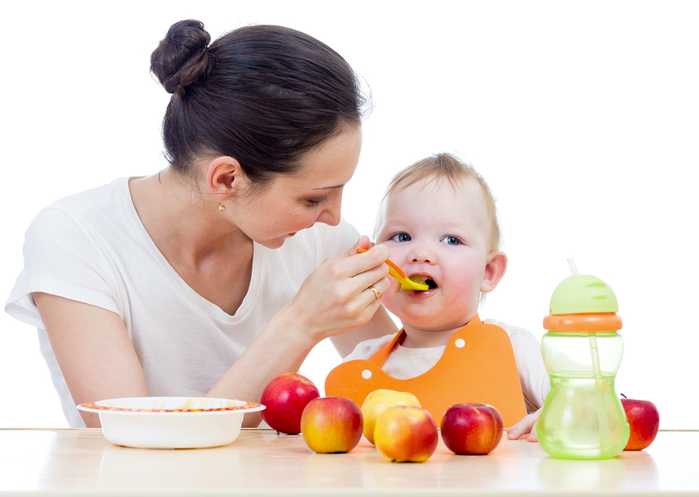 nine0003
nine0003
By now, the problem of choosing between breastfeeding or bottle feeding is complicated by the opposition between the opinions of modern medicine, basic nutrition and greedy marketing in fast food culture. Today, the global market for infant formula, a product that from its inception to the present has been an emergency baby food, is estimated to be worth about $11.5 billion.
US data clearly show that infants growing up in poverty and poor sanitation are still getting sick and dying because they are fed exclusively formula too early. nine0007 Research shows that formula-fed babies tend to be more likely to develop atopy, diabetes, and childhood obesity, all just because bottle-feeding is faster.
Figure 10. (Breastfeeding is the best)
Brief facts about modern infant formula.
- There is still no single formula for infant formula. nine0008 The process of production of artificial formulas for feeding from the very beginning of its history is accompanied by trial and error.
- The ingredients in infant formula are a mystery in most cases. Only the manufacturers themselves know what they put in their product, but they will never say what is there and, moreover, they are not legally obliged to do so, thanks to the right of "trade secrets".
- Certain infant formulas are clearly known to contain toxic and hazardous ingredients . Like many other baby food products on the market, some commercial formulas contain frightening ingredients, from sweeteners like corn syrup to preservatives like copper sulfide, which is a toxic pesticide.
- Within reasonable limits, manufacturers can put whatever they see fit into the mixture. And in fact the recipe for the same product can vary from batch to batch, depending on the price and availability of the ingredients. While we admit that the composition of infant formula is carefully regulated, no one requires honesty from manufacturers. For example, they must not register specific components of any batch or trademark with any authority. nine0003
nine0003
- Vitamins and valuable trace elements are added to the mixture, but not always in their easily digestible form. This means that the claim that "formula is nutritionally complete" may be technically true, but in any case, they add a load to children's organs and body systems (and NONE of infant formula contains live enzymes and does not have immune-boosting properties, unlike live breast milk!)
- Many infant formulas are over-sweetened. nine0008 While most infant formulas do not contain sugar in the form of sucrose, they do contain high amounts of other types of sugars such as lactose (milk sugar), fructose (fruit sugar), glucose (also known as dextrose, a simple sugar, found in plants) and maltodextrose (maltose sugar). Due to flaws in the legislation, all of these ingredients may be described as "sucrose free" in the formula.
- The Food and Drug Administration found that more than 90% mixtures contain random contaminants. Contaminants that enter the mixture during the manufacturing process are found in the form of metals (aluminum, cadmium, lead, and others). Bacterial and trace amounts of melamine, a toxic kidney-damaging chemical, are also persistent contaminants in mixtures.
Contaminants that enter the mixture during the manufacturing process are found in the form of metals (aluminum, cadmium, lead, and others). Bacterial and trace amounts of melamine, a toxic kidney-damaging chemical, are also persistent contaminants in mixtures.
What we've learned from the history of infant formula.
Because mixtures are not - and never have been! - Nutrientally complete, and because they do not contain the components of breast milk that support the child's immunity, it has been found that the use of formula by the child day after day has a devastating effect on his health in the short and long term. nine0008
The World Health Organization warns that "lack of breast milk - and in particular the lack of it in the first six months of an infant's life - is a significant factor in increasing infant morbidity and even mortality."
When it comes time to choose how to feed your baby, you need to remember that there is not a single medical indication in favor of choosing inadequate artificial nutrition. Research in this area confirms that breastfeeding prevents adverse health conditions, while formula feeding is associated with the development of these conditions. These data confirm that breastfeeding is and always will be the best way to feed babies and the safest way to feed children. nine0003
Research in this area confirms that breastfeeding prevents adverse health conditions, while formula feeding is associated with the development of these conditions. These data confirm that breastfeeding is and always will be the best way to feed babies and the safest way to feed children. nine0003
Thank you for reading this huge post! And, you just believe me, I have the second part! Stay tuned in the coming weeks as I go into more detail about the benefits of breastfeeding and compare the nutritional profiles of breastfeeding and IV.
(To be continued)
Gingi Freeman
babies-america/
Translated by Julia Sinelnikova, www.vk.com/julia_sinel
Why isn't Nestlé baby food in demand?
According to Euromonitor, in 2018, the largest growth in sales in the infant formula segment came from specially formulated foods for babies who have just transitioned from breastfeeding to formula. 123rf.com Swiss food giant Nestlé is trying to diversify its baby food range and bring innovative products to market. The prospects here are promising. However, many critics are skeptical. And they have a reason to. nine0003 This content was published on January 10, 2020 - 11:00
The prospects here are promising. However, many critics are skeptical. And they have a reason to. nine0003 This content was published on January 10, 2020 - 11:00
Jessica Davis Pluss (Jessica Davis Pluss)
In the first weeks of life, baby Lindsay Beeson developed a rash, traces of blood on diapers, diarrhea and vomiting. Doctors diagnosed an allergy to cow's milk. Like many other mothers in her situation, Lindsey eliminated milk from her baby's diet and, in addition to breastfeeding, began to gradually introduce complementary foods with hypoallergenic infant formula. In the second year of his life, her son was switched to milk formulas specially designed for babies with allergies. “I knew that they contained a balance of proteins, fats and vitamins similar to the composition of cow's milk. And my son liked the taste,” she said in an interview with swissinfo. ch. nine0003
ch. nine0003
Show more
For global food concerns such as Nestlé, the development and launch of new formulas for infants up to one year of age, including those suffering from allergic reactions, requiring special dietary nutrition or simply picky eaters, is another and very important abroad in expanding the range of baby food.
Speaking to a group of journalists in Lausanne, Thierry Philardeau, Nestlé's Senior Vice President of Strategic Dairy Business Development, recently stated: all babies and their mothers." From a practical point of view, the concern's strategy is to fill the gaps that arise in the nutrition of mothers and their children, regardless of whether the children receive artificial feeding, natural breastfeeding or combination. nine0003
The Swiss concern continues to focus on the nutrition of premature babies and children with special medical conditions. And yet, in recent years, he has consistently increased investment in research and development in order to obtain new products for the nutrition of children after the age of six months of life, that is, for a particularly difficult period when breast milk alone is no longer enough to meet the nutritional needs of a child. , and a complete transition to artificial food has not yet taken place. nine0003
, and a complete transition to artificial food has not yet taken place. nine0003
Artificial demand or valuable nutritional supplement?
Nestlé baby food has a direct impact on the health of millions of children around the world. More than 150 years have passed since Henri Nestlé (1814-1890) invented Farine Lactée, a baby porridge to support malnourished children. Today, Nestlé is the world's largest infant formula company. It has a fifth market share, followed by Danone in second place. nine0003
In recent years there has been a real boom in breastfeeding around the world. The profits of infant formula companies have fallen. Therefore, today these companies rely on "older babies" and on related products. According to EuromonitorExternal Link , the largest sales growth in the infant formula segment in 2018 came from specially formulated foods for babies who have just transitioned from breastfeeding to artificial foods. nine0003 External content
Today in supermarkets in almost every country in the world you can find the widest range of types of milk powder, dairy product concentrates and breast milk substitutes for children under one year old. It would seem great, but not everyone is satisfied with these products. Activists such as Patti Rundall are sounding the alarm. Since the 1980s, she has served as Director of Strategic Policy for Baby Milk ActionExternal Link , an international network of baby food organizations. Since her filing, the world has experienced a number of very large litigations in connection with the production and sale of artificial nutrition from Nestlé Corporation. nine0003
It would seem great, but not everyone is satisfied with these products. Activists such as Patti Rundall are sounding the alarm. Since the 1980s, she has served as Director of Strategic Policy for Baby Milk ActionExternal Link , an international network of baby food organizations. Since her filing, the world has experienced a number of very large litigations in connection with the production and sale of artificial nutrition from Nestlé Corporation. nine0003
Show more
What's the problem? It turns out that, according to her, the Nestlé and Danone concerns are the main initiators of the promotion of baby food for babies and milk formulas for children aged from 6 months to 3 years and further up to the age of nine. They use the same or very similar symbols (logos) as on infant formula, so parents, when they see the brand name, believe that they have a whole product line in front of them. However, new formulas for infant formula are just a marketing ploy. nine0003
nine0003
“There is nothing new in them, so all milk formulas, starting with formulas “6 months+”, as well as formulas for children from 1 year to 3 years and older, are simply not needed, they are just a way to get more money out of parents’ pockets ”, P. Randall told swissinfo.ch. “This product should be removed from the market. But the market has become so huge that no one wants to do it, although everyone knows that they are dealing with violations of the provisions of the WHO Guidelines to stop inappropriate forms of promotion of foods for infants and young children. nine0003
More precisely, we are talking about the International Code on the Marketing of Breastmilk Substitutes, adopted by WHO in 1981. This document sets standards for ethically responsible marketing, including restrictions on advertising, sponsorship, and giving away free samples of infant formula. The default document proceeds from the fact that, anyway, only breastfeeding is the ideal nutrition for a healthy baby up to six months, which, in fact, Danone, Nestlé and their opponents agree with. nine0003
nine0003
Pressure from the baby food industry
Controversy arises at the gray zone stage, when complementary foods with other foods and drinks can be introduced at about six months of age and older. You can enter, but is it necessary? And this is where the problem lies. Don't concerns create artificial demand, beneficial primarily to themselves? It is really difficult to understand this, the information received by parents from baby food manufacturers, doctors and staunch opponents of factory baby food is often contradictory. nine0003
Some scientific studies state that so-called “Third level milk formulas” for children aged one to three years are not needed, but they can help compensate for nutritional deficiencies, especially in cases of malnutrition or lack of certain nutrients substances in local foods”. So what's wrong with giving kids a better chance at delicious and most importantly healthy food?
Show more
Criticism of Nestlé has a long history. About forty years ago, breastfeeding activists first vociferously accused Nestlé of using an aggressive marketing strategy that resulted in mothers declining to breastfeed in favor of infant formula. The ensuing widespread boycott of Nestlé products led to major changes in the formation of marketing strategies.
About forty years ago, breastfeeding activists first vociferously accused Nestlé of using an aggressive marketing strategy that resulted in mothers declining to breastfeed in favor of infant formula. The ensuing widespread boycott of Nestlé products led to major changes in the formation of marketing strategies.
However, Catherine Watt of the Geneva group La Leche LeagueExternal link , an international public private secular organization to support breastfeeding mothers, says that many women today stop breastfeeding earlier than they should. Why? “This is happening as a result of veiled pressure from the baby food industry, which has an arsenal of advertising in favor of various types of complementary foods and infant formula,” she said. “If there are doubts about whether the baby has enough breast milk, and there is some kind of milk formula in the closet, you just try to use it. And now you are already “under the hood” of the industry.” nine0003
Show more
In developing countries, the consequences of such a move can be most dramatic. CTO of the Breastfeeding Promotion Network of India BPNIExternal link JP Dadhich is particularly concerned about the high cost of these products, their negative environmental impact and potential risks of infection.
CTO of the Breastfeeding Promotion Network of India BPNIExternal link JP Dadhich is particularly concerned about the high cost of these products, their negative environmental impact and potential risks of infection.
“We can't be sure about the quality of the water that these formulas are based on, which increases the risk of diarrhea. And this is in conditions when there is now enough milk of animal origin in India. After boiling, it is completely safe, in addition, it is quite acceptable here, taking into account the cultural traditions of the country. For children, it is better to use complementary foods from quality local products, continuing to breastfeed the child after 6 months.” nine0003
The World Health Organization (WHO) is also concerned that infant formula designed specifically for babies after one year of age can shorten the duration of breastfeeding by depriving the baby of important nutrients, especially if the products are labeled similarly and are promoted as more healthy alternative to breastfeeding due to the increased content of vitamins and minerals.
The devil is in the details
All this has caused and continues to cause heated discussions between governments and food company lobbyists. “One of the challenges with regard to 'level 2' formula (after 6 months) is the need to understand whether foods for children aged 1 to 3 years should be considered specifically as 'substitutes' for breast milk, and if not, what should they be called.” Tom Heilandt of the Codex Alimentarius Commission, an international food standards group, tells us this. nine0003 Some governments would like to ban these formulas so as not to completely "kill" the motivation to breastfeed, while other countries want to leave the choice to consumers. India is a country with some of the most stringent regulations. Here, any products intended specifically for children under the age of two years are categorized as breast milk substitutes and thus fall under the international “Code of Regulations” of WHO. Group NestléExternal link says it has gone further than many other players in the industry by operating under European Union rules coming into effect in 2020. At the same time, Nestlé opposes any additional regulation, arguing, based on studies already conducted in many countries, that any artificial nutrition alternative will still be less healthy than any mixture. “There is no point in restricting nutrition advertising for children under the age of one, especially when there are almost no restrictions on advertising Coca-Cola and other fast food anywhere,” says T. Filardo. nine0359 Nestlé recognizes that it needs to proceed with caution given its history of high-profile scandals. “It’s not for you to sell chocolate, we have a huge responsibility. Every year we produce formula for 15 million children, which is equal to the population of the Netherlands,” says T. Filardo. At the same time, the company has already updated its marketing policy several times by creating a system for reporting violations and annually providing reports on compliance with its obligations. Unlike the pre-1980s era, the company is very clear that "breastfeeding is the best feeding option." At the same time, she wants her food products for children to be almost in no way inferior in quality to breast milk. Critics say it's not enough to be "the lesser of the evils." However, Nestlé argues that if the company is forced out of the baby food market, companies with more than a dubious reputation will take its place. This is especially true in countries with weak regulatory environments such as China, Russia, and the United States. nine0003 According to WHO, 58 countries around the world still do not have laws restricting the marketing of infant formula for children under one year of age. “I want to complete the story of Nestlé as a company that allegedly kills children,” says T. Filardo. “Let's move on without forgetting the past. We have drawn conclusions, we have changed. I want to look to the future, I don’t want to bear the stigma of the eternal guilty anymore, especially since someone, and our company, has done more in this area than many other companies.
Show more
Always guilty?  nine0003
nine0003 


